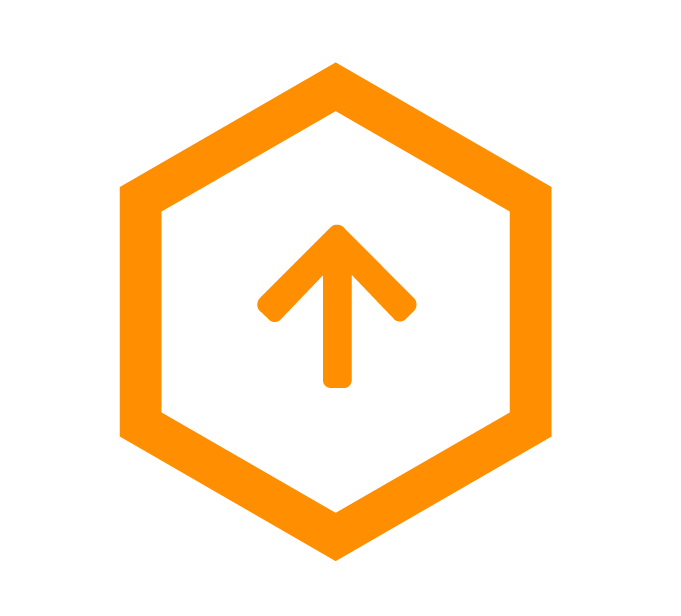
Snowflake vs. Traditional Data Warehouses
Which is Better for Analytics?
In the era of data driven decision making, businesses across industries are rapidly embracing analytics to gain actionable insights from their data. At the heart of these analytics initiatives lie the data warehouses, which consolidate, store, manage, and facilitate access to the vast amounts of structured and unstructured data. As companies continue to deal with ever-increasing data volumes, choosing the right data warehousing solution becomes more important than ever. In this blog, we will compare Snowflake, a popular cloud-based data warehouse, with traditional data warehouses to determine which is better for analytics.
What is Snowflake?
Snowflake is a fully managed, cloud-based data warehousing platform that provides a scalable, secure, and flexible solution for data storage and analysis. Designed specifically for the cloud, Snowflake leverages a unique multi-cluster shared architecture that separates storage and compute resources, allowing for nearly unlimited scalability, cost optimization, and improved performance.
Traditional Data Warehouses
Traditional data warehouses are on-premises systems that store and manage large volumes of structured data. They rely on proprietary hardware and software and are typically managed by in-house IT teams. Traditional data warehouses have been the go-to solution for businesses for many years, but with the advent of cloud computing and big data, their limitations have become more evident.
Snowflake vs. Traditional Data Warehouses: A Comparison
SCALABILITY
Snowflake:
One of Snowflake's main advantages is its ability to scale storage and compute resources independently. This means that users can add or remove resources as needed, without impacting the performance of the data warehouse. This elasticity allows organizations to quickly adapt to changing workloads and data volumes.
Traditional Data Warehouses:
Scaling traditional data warehouses usually requires substantial investments in infrastructure and can be a complex process, often involving downtime and manual intervention. This can result in decreased performance and higher costs, especially when dealing with unpredictable workloads and data growth.
COST
Snowflake:
Snowflake offers a pay-as-you-go pricing model, allowing organizations to only pay for the resources they actually use. With Snowflake’s architecture, each query can have the hardware required for its specific workload, leading to significant cost savings. Performance and cost in Snowflake go hand-in-hand, as faster queries lead to lower costs. Over the past year or so, Snowflake has lowered the average cost per query by 20% through performance improvements such as the Graviton2, continual query engine optimizations, and Snowflake managed compute for tasks. This is particularly beneficial when compared to traditional data warehouses, where businesses often need to allocate hardware for the heaviest workload, resulting in underutilized resources most of the time.
Traditional Data Warehouses:
The costs associated with traditional data warehouses include hardware, software, and maintenance expenses. These expenses are typically fixed and can be quite high, especially if a company is dealing with increasing data volumes and complex analytics requirements. Furthermore, as hardware must be allocated for the heaviest workload, resources tend to be underutilized for the majority of the time, leading to inefficiencies and increased costs.
PERFORMANCE
Snowflake:
Snowflake's multi-cluster architecture ensures high levels of performance, even when dealing with large amounts of data and concurrent users. Snowflake's automatic query optimization and caching mechanisms further contribute to its ability to deliver fast query response times. As mentioned in the Cost section, Snowflake has a proven history of continual performance improvements, such as the AWS Graviton2 update, query engine optimizations, and managed compute for tasks, which have led to a 20% reduction in the average cost per query over the past year or so. This focus on performance enhancement not only benefits users in terms of faster query response times but also results in cost savings.
Traditional Data Warehouses:
While traditional data warehouses can deliver good performance for smaller data sets, they can struggle with larger data volumes and complex analytics tasks. In addition, performance in traditional data warehouses tends to decrease as time goes on due to higher volumes of data on the same hardware. This can lead to slower query response times, decreased user satisfaction, and increased costs for upgrading or expanding hardware resources. In contrast to Snowflake, cost savings in traditional data warehouses are not directly tied to performance improvements, which can result in less incentive to optimize performance and reduce costs.
SECURITY
Snowflake:
Snowflake's platform is built with security in mind, providing features such as end-to-end encryption, secure data sharing, and advanced access control. Snowflake undergoes regular third-party security audits and is compliant with major industry regulations, including GDPR, HIPAA, and SOC 2. In addition, during their last Earnings Call, Snowflake announced that they are in the process of obtaining FedRAMP High certification, which will enable the platform to securely handle even the most sensitive data for government agencies and organizations with stringent security requirements. This commitment to security ensures that your data is protected and compliant with industry standards.
Traditional Data Warehouses:
Security in traditional data warehouses often relies on perimeter-based security measures and may require additional investments in security software and hardware. While these systems can provide adequate protection, they may not be as up-to-date or comprehensive as cloud-native solutions like Snowflake. Additionally, traditional data warehouses might not be as agile in obtaining certifications like FedRAMP High, which could limit their use in specific industries or government sectors.
EASE OF USE
Snowflake:
Snowflake's fully managed nature means that businesses do not need to worry about infrastructure management or maintenance. This allows data teams to focus on analyzing data and gaining insights, rather than dealing with the complexities of managing a data warehouse.
Traditional Data Warehouses:
Managing traditional data warehouses can be complex and time-consuming, often requiring dedicated IT teams and specialized expertise. This can divert resources away from core business functions and result in higher operational costs.
When comparing Snowflake and traditional data warehouses, it becomes clear that Snowflake offers several advantages, particularly in terms of scalability, cost, performance, security, and ease of use. Its cloud-native architecture, pay-as-you-go pricing, performance improvement over time and fully managed service make it a compelling choice for organizations looking to improve their analytics capabilities.
However, it is essential to remember that each organization's needs are unique, and the best data warehousing solution depends on various factors such as data volume, analytics complexity, budget, and existing infrastructure. In some cases, traditional data warehouses may still be a viable option, especially for organizations with limited internet connectivity.
Ultimately, the decision between Snowflake and traditional data warehouses should be based on a thorough evaluation of your organization's specific needs and goals. By choosing the right data warehousing solution, you can empower your business to make data-driven decisions more effectively and efficiently, ultimately driving growth and success.






